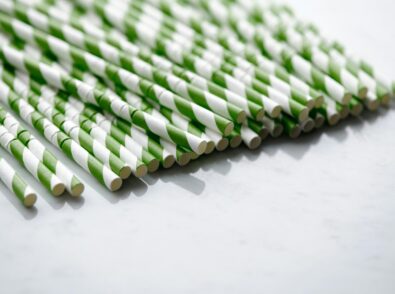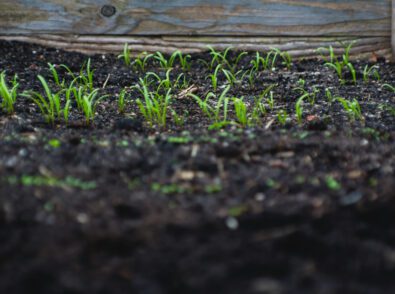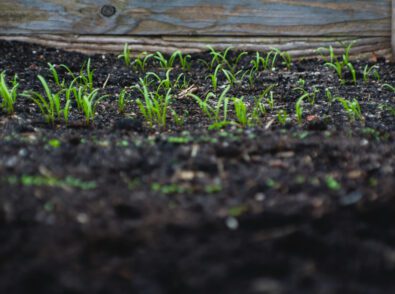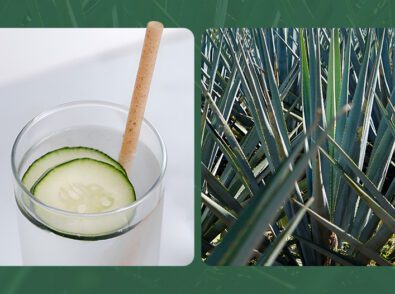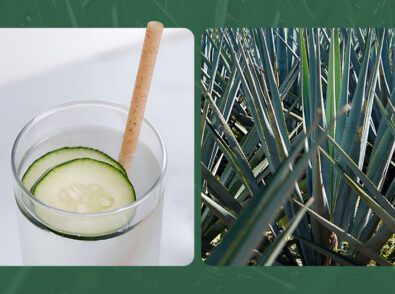The Different Types of Biodegradable Straws
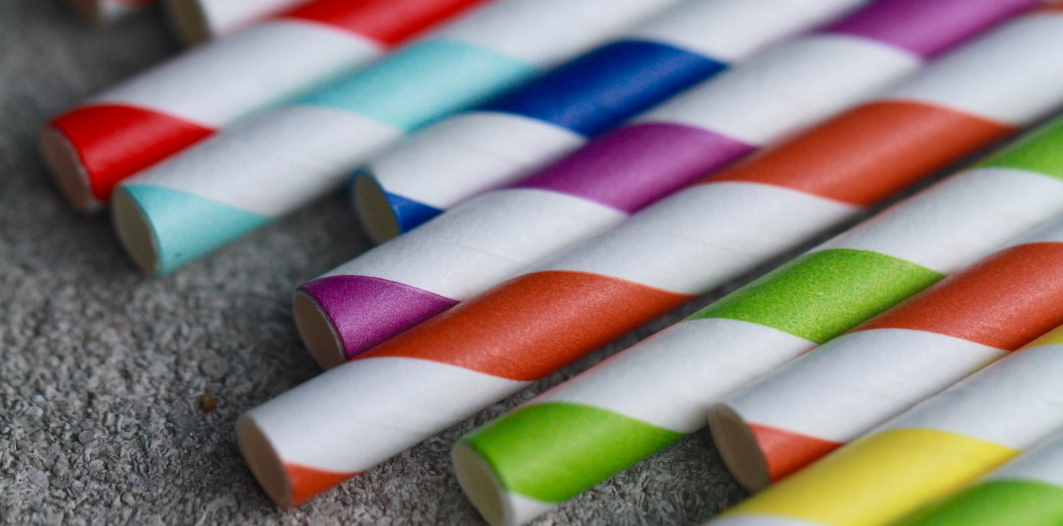
Content
- What are Biodegradable Straws?
- The Benefits of Biodegradable Straws
- What Are The Different Types of Biodegradable Straws?
- PHA Straws
- PLA Straws
- Paper Straws
- Agave Straws
- Bamboo Straws
- Grass Straws
- Sugarcane Straws
- Where Can You Get Biodegradable Straws?
- How to Dispose Biodegradable Straws Correctly
- Biodegradable vs. Compostable vs. Marine-Degradable
- Home-Compostable vs. Industrial-Compostable Straws
- The History of Biodegradable Straws
Of the nearly eight million tons of plastic waste, plastic straws make up about 4% of that total. They are also among the top 10 contributors to ocean marine debris. Plastic straws are not recyclable, partly because of their size but also because most are tossed into the trash and end up in a landfill.
Business owners and shoppers have become more committed to adopting alternative plastic straw options due to the increase in environmental impact research on single-use plastics. Businesses that switch to sustainable straws often report positive feedback from customers who appreciate their commitment to environmental sustainability. With this, biodegradable straws are starting to replace plastic straws, but with so many different types of straw materials on the market today, you might be wondering how to choose.
In this guide, we examine different environmentally friendly drinking straws made from plant fiber and compare their sustainability and durability so you can make informed choices that align with your values to contribute to a healthier planet.
| Term | Definition | Key Characteristics | Cons |
|---|---|---|---|
| Biodegradable | Breaks down naturally into simpler compounds over time. | Requires moisture, heat, and microorganisms. Reduces waste in landfills and oceans. | Limited color options |
| Compostable | Designed to degrade in composting facilities under controlled conditions. | Breaks down into nutrient-rich compost. Diverts waste from landfills, enriches soil. | Rustic look may not suit all brands |
| Marine-Degradable | Breaks down in marine environments. | Disintegrates into harmless substances without impacting marine life. Combats plastic pollution in oceans. | Only available in blue, more expensive |
What are Biodegradable Straws?
Biodegradable straws are a type of straw that can decompose naturally into the environment without causing harm. When discussing biodegradability, we refer to a product’s capacity to break down in an environment. Different straw materials break down at different rates, so knowing and understanding the properties of each material may help you choose the best biodegradable straw for your needs.
Plastic Straws vs Biodegradable Straws
Plastic straws can take hundreds of years to decompose and often end up in landfills or oceans, where they can harm wildlife and pollute waterways.
Biodegradable straws decompose naturally into the environment without causing harm.
The Benefits of Biodegradable Straws
While both biodegradable and recyclable straws have multiple benefits over plastic straws, they have different end-of-life cycles. Recyclable straws help reduce waste and conserve resources by being processed and reused to create new products or materials.
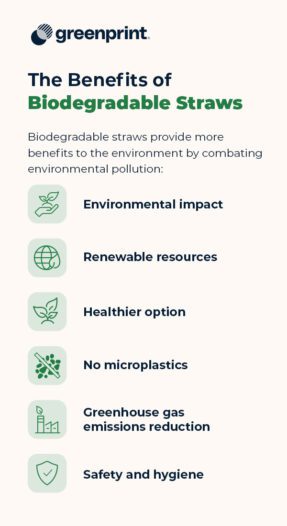
Biodegradable straws provide more benefits to the environment by combating environmental pollution:
- Environmental impact: Biodegradable straws break down naturally, reducing waste in landfills and oceans.
- Renewable resources: Renewable sources lessen straw manufacturing’s dependence on finite fossil fuels.
- Healthier option: Biodegradable straws are made from plant-based materials and offer a safer choice to health-conscious individuals than plastic straws that may contain toxic additives.
- No microplastics: Biodegradable straws decompose naturally without forming harmful microplastics that can impact ecosystems and human health.
- Greenhouse gas emissions reduction: Using biodegradable straws reduces the demand for plastic, leading to lower greenhouse gas emissions associated with plastic production and disposal.
- Safety and hygiene: Biodegradable straws provide a safe and convenient alternative for situations where reusable straws are not available or practical.
What Are The Different Types of Biodegradable Straws?
Businesses and consumers have a choice of multiple plastic straw alternatives, from reusable straws to biodegradable straws to certified compostable drinking straws. Let’s compare some of the best eco-friendly straw solutions that can be used instead of plastic.

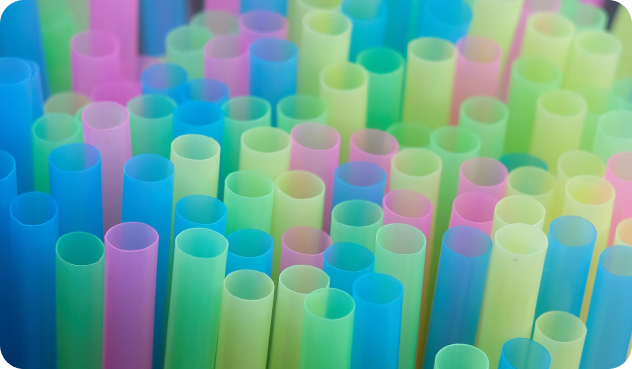
PHA Straws
Polyhydroxyalkanoate (PHA) is a biodegradable thermoplastic produced from renewable resources such as cornstarch, sugarcane, and canola and soy seeds. Usually beige or tan in color, PHA straws resemble plastic straws, can withstand high temperatures and are FDA-approved for food service. Compared to paper straws, PHA straws are more versatile and have a longer shelf life, making them a more sustainable and durable option for restaurants and other food service outlets.
PHA Straws Pros
- Biodegradable in industrial composting, home composting, and marine environments
- Made from renewable sources and sustainable
- Durability performs and looks like plastic
- Lots of color, size, and style options
PHA Straws Cons
- Most expensive option in the market
- Limited supply
- Recycling programs for PHA materials are limited
- The degradation time of PHA materials varies depending on the conditions
PLA Straws
Polylactic acid (PLA) is a critical innovation in plastic alternatives. PLA straws are an eco-friendly alternative to traditional plastic straws. PLA is a bioplastic made from natural resources like agave, cornstarch, or sugarcane.
The process of making PLA straws involves a delicate balance of temperature, pressure, and chemistry to turn these raw materials into a sturdy, flexible, and environmentally safe product. Once heated, the material is molded into straw-shaped tubes and cut to size. The result is a product that can serve the same function as traditional plastic straws while reducing the environmental impact caused by non-biodegradable plastics.
PLA is biodegradable under certain conditions. PLA straws cannot be sent to landfills as they require high temperatures to break down. Proper disposal and efficient biodegradation of PLA require industrial composting.
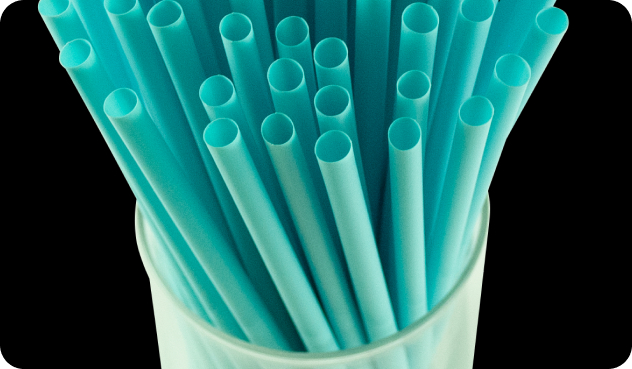
PLA Straws Pros
- Biodegradable
- Made from renewable sources
- Durable
- Sustainable
- Performs and looks like plastic
- Lots of color, size, and style options
PLA Straws Cons
- Will not biodegrade efficiently in a landfill
- Requires industrial composting
Paper Straws
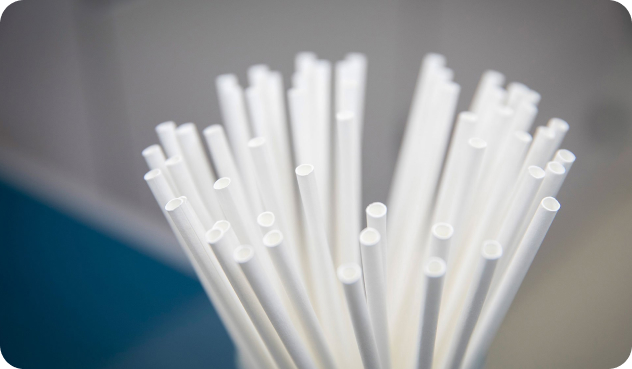
Paper straws have gained popularity due to their biodegradable nature and eco-friendliness. Unlike plastic straws, they do not harm the environment and can be easily disposed of with regular trash or compost. Paper straws are a viable, cost-effective solution to reduce plastic waste and are significantly more sustainable.
Paper straws are made from FDA-approved food-grade paper and do not contain BPA plastics; however, use cases and durability are considerations. Paper straws will get soggy if left in liquid, and some consumers don’t like the feel of paper in their mouths.
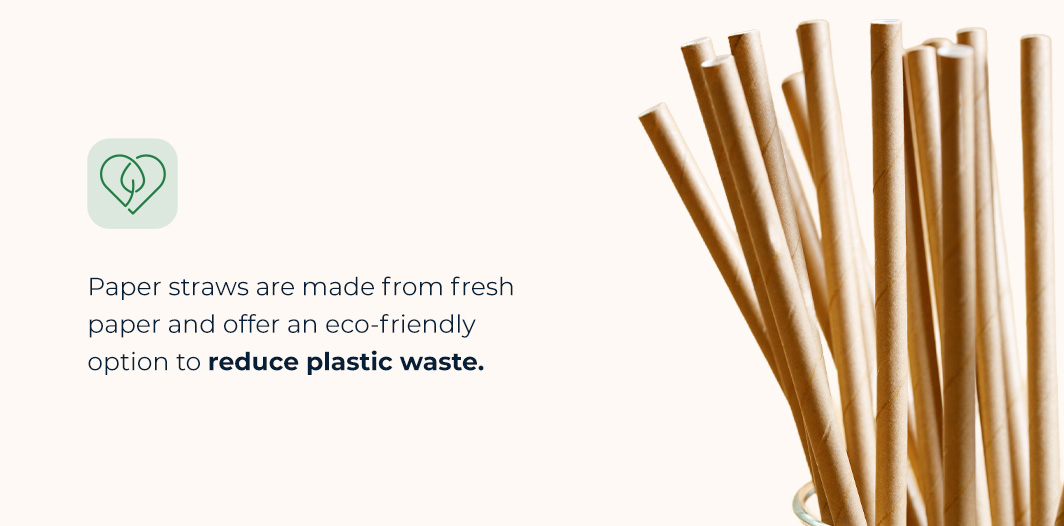
Paper Straws Pros
- Degrade faster than plastic straws
- Biodegradable, safe and toxin-free
- Inexpensive
- Availability in various designs and colors
Paper Straws Cons
- Becomes soggy in liquid
- The majority contain chemicals known as poly- and perfluoroalkyl substances (PFAS) that don’t break down in the body or the environment
- Food-contaminated paper straws are non-recyclable
- They can be just as energy-costly to produce as plastic straws
Agave Straws
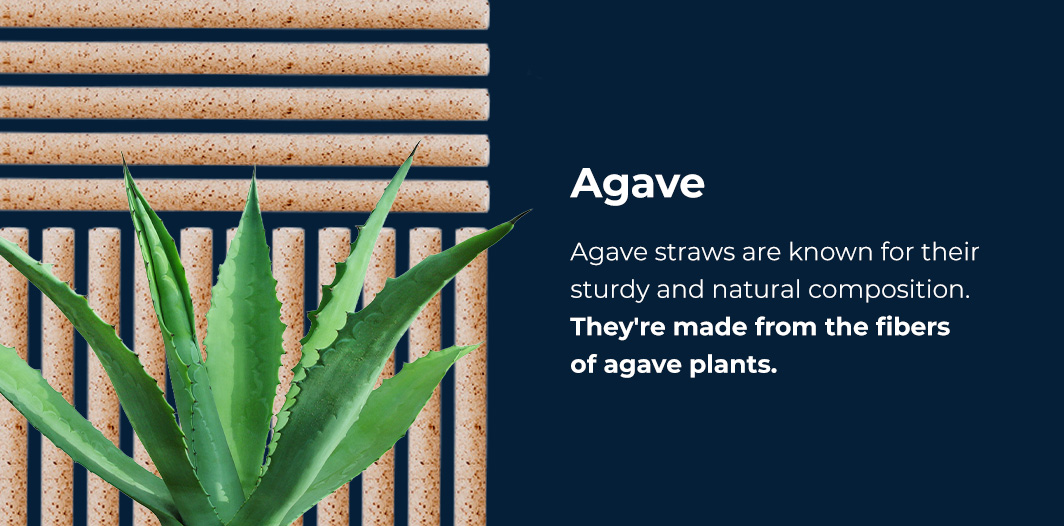
Agave straws are known for their sturdy and natural composition. They’re made from a fiber produced from FSC-certified waste fibers from the agave plant. Using waste materials with no other purpose means we are upcycling plant waste and turning it into something useful.
The primary purpose of agave is to produce Tequila and Mezcal, an industry that uses quite a lot of the plant but leaves behind massive amounts of unusable waste. Turning that waste into products like straws and other single-use food packaging products is an excellent way to solve both problems—finding a durable, sustainable alternative to bioplastics and reducing the waste left behind by beverage alcohol manufacturers.
Agave straws are sturdy and long-lasting, making them a durable and sustainable alternative to plastic. Agave straws are non-toxic and biodegradable making them ideal for food service and hospitality industries that prioritize sustainability and customer demand for eco-friendly options. They are guaranteed to break down by 95% in the first 180 days in an active landfill, making them a superior choice for the environment over plastic straws.
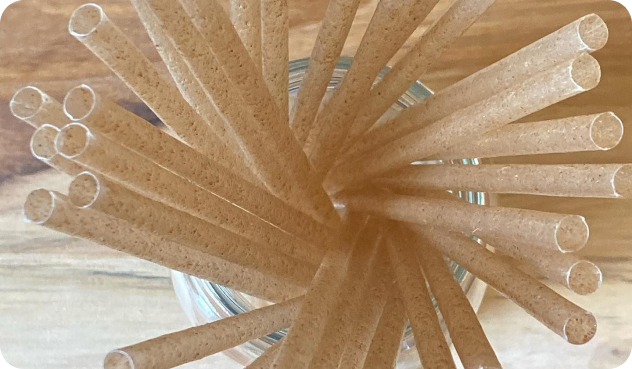
Agave Straws Pros
- Durable and Maintains structural integrity even with prolonged use
- Biobased material that can be disposed of regularly in a trash can
- Certified by the Forest Stewardship Council (FSC) for upcycling plant waste
- Suitable for hot and cold beverages, including smoothies and juices
- Comply with local and state laws that ban single-use plastics
- 95% biodegradable in the first 180 days
- Performs similarly to plastic straws
Agave Straws Cons
- Limited suppliers of this product
- Limited color and style options
Bamboo Straws
Bamboo is a fast-growing, renewable resource that is durable and lightweight. Bamboo straws are known for their mild, neutral taste that doesn’t interfere with a drink’s flavor. They’re designed for multiple uses, further reducing waste.
Bamboo Straws Pros
- They are one of the best compostable straws since they break down naturally
- Chemical-free and safe for reuse, maintaining beverage taste integrity
- Renewable, organic resource that lowers deforestation
- Cost-effective option that supports sustainable practices
- Versatile shapes and sizes make it suitable for a wide range of drinks
Bamboo Straws Cons
- They can’t be recycled, but they biodegrade and compost quickly
- Over time, these straws can show signs of wear and need to be replaced
- Bamboo can be sensitive to moisture and may form mold or degrade without proper drying after every use or wash
- Bamboo straws have limited heat resistance to extremely hot beverages
Grass Straws
Grass straws are made from various natural grass types, such as wheatgrass or hay. They are biodegradable and compostable, and they are made by cutting, washing, and drying grass.
Grass Straws Pros
- Since no chemicals are used, they pose no threat to wildlife if they’re accidentally ingested
- These straws undergo minimal processing during a simple production process
- Cost-effective alternative to plastic straws as it requires minimal resources
Grass Straws Cons
- Limited availability
- Shorter shelf life
- Less durable
- Not suitable for hot beverages
Sugarcane Straws
Sugarcane straws are created from bagasse, a byproduct of sugarcane processing, making them eco-friendly and sustainable options. The bagasse is cleaned and processed to remove impurities, then molded using heat and pressure.
Sugarcane Straws Pros
- They’re strong, durable, and water-resistant, which makes them suitable for cold beverages
- Sugarcane straws aren’t edible but are biodegradable and safe for wildlife
- They last longer in beverages than paper straws and are taste-free
- These straws are fully home compostable
Sugarcane Straws Cons
- Limited availability
- Unsuitable for hot beverages
- Energy-intensive production
- Limited shelf life
Where Can You Get Biodegradable Straws?
You can find biodegradable straws at various places, both online and in physical stores. Here are a few common places where you can purchase them:
- Online retailers: Well-known retailers often offer biodegradable straws for purchase.
- Eco-friendly businesses: Local and online eco-friendly businesses sell a wide range of plant-based biodegradable straws along with other sustainable products.
- Supermarkets: Some larger supermarkets or grocery stores may have an eco-friendly section that includes biodegradable straws.
- Restaurant supply stores: Stores that cater to restaurants and food service businesses may carry bulk quantities of biodegradable straws.
- Specialty shops: Shops that focus on sustainable living, organic products, or environmentally friendly goods are likely to have biodegradable options.
- Farmers’ markets: Some farmers’ markets may have vendors selling eco-friendly products, including biodegradable straws.
- Bulk stores: Wholesalers that sell eco-friendly products may offer biodegradable straw options in large quantities.
How to Dispose Biodegradable Straws Correctly
Not all biodegradable straws are the same, nor can they be disposed of similarly.
For example, paper and agave straws are biodegradable in landfills while straws made from bioplastics like PHA and PLA require high heat to break down and must be disposed of through an industrial composting program.
To help you decide what type of biodegradable straws are best for your needs, consider how you will dispose of them.
Biodegradable vs. Compostable vs. Marine-Degradable
Although the terms “biodegradable,” “compostable,” and “marine-degradable” sound the same, they actually react differently when disposed of:
- Biodegradable straws break down naturally into simpler compounds over time, typically within a few years, when exposed to environmental conditions like moisture, heat, and microorganisms. Because they’re made from renewable resources, biodegradable straws reduce plastic waste accumulation in landfills and oceans, helping mitigate pollution.
- Compostable straws are designed to degrade in composting facilities under controlled conditions within a specific timeframe with the aim of breaking down into nutrient-rich compost. These plant-based straws divert waste from landfills and can enrich soil when properly composted, contributing to a circular economy.
- Marine-degradable straws can break down in marine environments where they disintegrate into harmless substances without impacting marine life. Designed to combat plastic pollution in oceans, these straws are made from materials that break down in saltwater environments.
Home-Compostable vs. Industrial-Compostable Straws
Compostable straws, such as those made of bamboo, paper, or sugarcane, are classified as those that can decompose in a home compost bin or straws that require disposal in an industrial compost facility.
Under normal conditions, home-compostable straws can break down in home composting systems. As long as the heat, moisture, and microorganism conditions are similar to traditional composting, these straws will decompose effectively, although over a longer period of time.
Industrial composting facilities deal with a broader range of compostable products in controlled environments. Industrial-compostable straws require higher temperatures and microbial activity in industrial composting settings to fully break down within a shorter time frame.
The History of Biodegradable Straws
From a necessity to a minor convenience, biodegradable straws were created from a long history of straw-making:
- 3,000 B.C.: Ancient Mesopotamians used 3-foot-long drinking straws from various materials, including gold, silver, or wood, to drink brewed beer from large vats that were too heavy to move.
- 1500s: Argentinians used metal straws invented specifically for drinking yerba mate—a whole-leaf herbal tea. It contained a large hollow circle at the bottom with holes to strain tea leaves. This reusable drinking straw is still used today.
- 1800s: Rye grass straws were used for drinking spirits but left an unpleasant flavor in beverages. Inventors created drinking straws out of manila paper to address the flavor issue. They eventually transitioned from using glue to wax-coated manila paper, which led to the creation of the modern paper drinking straw.
- 1930s: Paper straws were widely used, and soon the first bendy straw was created. These straws were marketed during the polio era as a hygienic solution for communal beverage consumption and to feed sick patients easily.
- 1940s to 1980s: Despite the initial success of paper bendy straws, they faced challenges due to production limitations, and people were dissatisfied with straws losing their shape in liquids. Multiple companies started mass-producing plastic straws to replace paper straws, and new products like the Krazy Straw were invented.
- 1990s to 2000s: As awareness of plastic pollution and fossil fuel depletion grew, researchers explored biodegradable materials like cornstarch and polylactic acid (PLA) for sustainable alternatives. Early bioplastic prototypes from plant-based polymers laid the foundation for today’s bioplastic straws.
- 2010s: Plastic pollution awareness increases among the public. An internet video showing a sea turtle with a plastic straw stuck in their nostril goes viral, sparking global outrage and calls for plastic straw bans. Many campaigns took off. Countries like France and businesses such as Starbucks and McDonald’s took steps to ban or reduce plastic straw usage.
- 2020s: More cities and countries, like England and Canada, ban single-use plastics, including plastic straws. Most people worldwide support banning single-use plastics, and large corporations voluntarily switched to eco-friendly alternatives.
Sustainable Agave Straws From Greenprint
Making environmentally conscious choices in everyday consumption habits will help create a more eco-friendly future. Sustainable straws, especially when made from sustainably sourced materials, provide an eco-friendly alternative to traditional plastic straws. Agave straws are biodegradable and compostable, making them ideal for businesses and consumers looking to reduce their environmental impact.
Greenprint offers several biodegradable straws that are sturdy and durable. Whether you need small or bulk quantities, you can have peace of mind that our products will help prevent unnecessary pollution.
Ready to make the switch to eco-friendly alternative straws? Get in touch with our team.
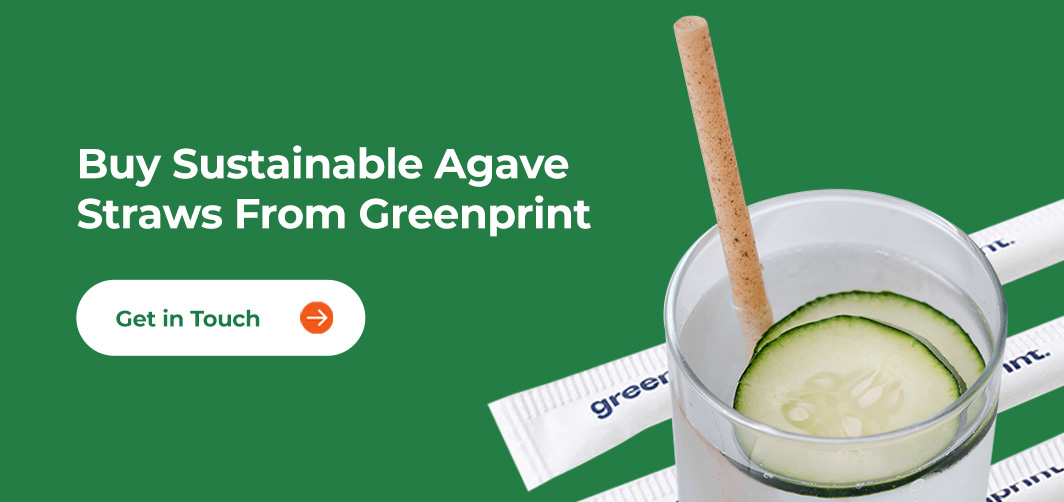
References
- https://www.ourlaststraw.org/facts-figures
- https://youmatter.world/en/definition/biodegradable-plastic/
- https://pubs.rsc.org/en/content/articlehtml/2022/gc/d2gc02169b
- https://fortune.com/well/2023/08/24/paper-straws-harmful-forever-chemicals-plastic-straws/
- https://us.fsc.org/en-us/certification
- https://www.liquor.com/articles/mezcal-sustainability/
- https://fsc.org/en
- https://www.businessinsider.com/oldest-known-drinking-straws-allowed-ancients-to-share-communal-beer-2022-1#
- https://www.youtube.com/watch?v=4wH878t78bw&t=1s
- https://www.canada.ca/en/environment-climate-change/news/2021/12/government-of-canada-moving-forward-with-banning-harmful-single-use-plastics0.html
- https://e360.yale.edu/digest/three-in-four-people-worldwide-support-a-ban-on-single-use-plastics

